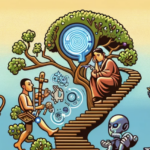
Knowing how to use psychological triggers can be the difference between running a successful business and going bust.
We recommend trying these 9+ pricing psychology tricks to appeal to your customers and drive more sales.
Let’s see how they work…
Table of Contents
Value pricing
Expensive products can feel more valuable.
Make your product too cheap, and your customers may question its value.
Charm pricing
This is a well-known trick…
Prices ending in 9 (or even 7) sell better than those ending in 0.
For example, a product priced at $200 statistically has less chance to sell than the same product priced at $199.99 or simply $199.
Buy one, get one free
It’s basically the same offer as handing out 50% discounts on two products.
But shoppers feel like they’re gaining more with a free product.
Shorter prices
Price appearance can make something look more or less expensive.
For example, $1500.00 feels much more expensive than $1500 or even 1500.
Some restaurants, for example, will not put the dollar sign on the menu so people focus less on the idea that they’re spending money even though it’s obviously a stated price.
7 Pricing Strategies – How to Price a Product
Anchoring
When you list multiple products, show the most expensive product first.
It usually makes customers spend more.
Bundle items
Believe it or not, customers would rather pay a single lump sum rather than purchase items separately.
Bundle your items and you increase average order value while encouraging shoppers to buy.
Website price positioning
If you position the product price on the top-left of your page, it feels less expensive.
On the other hand, positioning your price to the right makes it seem pricier.
Wording
By using words like “small,” “low,” and “tiny,” you can make your product appear cheaper.
Alliteration
This one is wicked. If your pricing has a sequence of the same numbers it’s much more likely to sell.
Nine-ninety-nine is much more appealing than eight-seventy-two.
Decoy in the middle
You might’ve heard of this one… Give your customers three options, but the middle option should be there to boost the sale of the third.
Make it so the third option brings more value for the price.
This is common is software sales and SaaS.
For example, look at how SEMrush prices their three tiers. The first one looks very basic, trying to drag customers over to the third. Then the third looks like a good value for power users.

Now that you’ve learned these psychological tricks, it’s time to start implementing them, no?


![Backwards 3: How to Type "Ɛ" [EASY]](https://softwareblade.com/wp-content/uploads/2022/02/Screen-Shot-2022-02-19-at-9.03.25-PM-150x150.png)